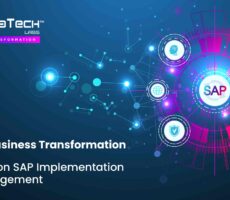In the wake of a global social awakening and in a rapidly globalizing world, the call for Diversity, Equity, and Inclusion (DEI) in the workplace has never been louder or more crucial. It is no longer just a moral imperative but also a business one. Diverse companies are shown to be more innovative and better positioned to succeed in the global marketplace. As global organizations, we must champion DEI, not only within our walls but also within the communities we operate.
Understanding DEI in a Global Context
Diversity pertains to the representation of different identities and perspectives in an organization, encompassing race, gender, ethnicity, age, nationality, and more. Equity involves ensuring fair treatment, access, and opportunity for all employees, acknowledging and addressing systemic disadvantages that certain groups may face. Inclusion emphasizes creating an environment where diverse individuals feel valued, heard, and empowered to participate fully.
In a global organization, these concepts become more nuanced. It’s about appreciating the different cultures, languages, customs, and business practices that employees bring; addressing unequal opportunities on a global scale, and fostering a sense of belonging for employees, regardless of their location.
Building a Global DEI Strategy
Creating a DEI strategy for a global organization requires a careful, thoughtful approach. Here’s a roadmap to get started:
1. Start at the Top
The push for DEI must start from the top. Leadership must express a clear commitment to DEI, setting the tone for the entire organization. This involves not only vocalizing support but also reflecting diversity within leadership teams.
2. Understand Your Starting Point
Conduct a comprehensive DEI audit. Understand the current state of your organization in terms of representation, equity, and inclusion, and identify areas for improvement.
3. Set Clear Goals
Based on your audit, set clear, measurable DEI goals. These could be improving representation in leadership roles, addressing pay equity, or enhancing the inclusivity of your culture.
4. Customize Your Approach
A one-size-fits-all approach doesn’t work for DEI, especially in a global context. Understand the unique challenges and cultural nuances of each region you operate in, and tailor your strategy accordingly.
5. Implement DEI Training
Implement regular DEI training to raise awareness about unconscious biases, microaggressions, and the importance of DEI. Training should also equip employees with the skills to foster an inclusive culture.
6. Foster a Culture of Inclusion
Building a diverse and equitable organization is not enough; you must also foster a culture where everyone feels included. This could involve creating Employee Resource Groups (ERGs), implementing inclusive communication practices, and promoting a speak-up culture.
7. Measure Progress
Regularly track and report on your progress towards your DEI goals. This not only holds you accountable but also helps you understand the effectiveness of your initiatives and make necessary adjustments.
8. Engage with the Community
Extend your commitment to DEI to the communities you operate in. This could involve supporting local minority-owned businesses, partnering with organizations that promote DEI, or implementing community outreach programs.
9. Iterate and Improve
DEI is not a one-time initiative but a long-term commitment. Continually evaluate and refine your strategy, staying open to learning and improving.
Diversity, Equity, and Inclusion (DEI) in an organizational context goes beyond the traditional understanding of gender and racial representation. It considers a broad array of individual characteristics, experiences, and identities.
Here are some aspects typically considered under DEI:
Race and Ethnicity: Different racial and ethnic backgrounds should be represented, respected, and treated equitably in the workplace. This means providing equal opportunities and addressing any systemic biases or discrimination.
Gender and Sexual Orientation: A diverse workplace includes individuals across the gender spectrum (men, women, transgender individuals, etc.), as well as people of various sexual orientations (gay, lesbian, bisexual, etc.). It’s essential to ensure that policies and practices don’t discriminate based on these attributes.
Age: Workplaces should be inclusive of all age groups, from younger employees just starting their careers to older workers with years of experience. Age diversity can provide a broad range of perspectives and ideas.
Disability Status: This includes people with physical disabilities, mental health conditions, and neurodiversity (e.g., autism, ADHD). Workplaces should provide accommodations and modifications as needed to ensure equal opportunities for all employees.
Religion: People of different religions and belief systems should feel welcome and accommodated in the workplace. This could mean providing space for prayer, being considerate of religious holidays, or fostering an environment where individuals can express their beliefs without fear of discrimination.
Nationality and Immigration Status: Especially important in global companies, nationality and immigration status diversity means including employees from different countries or with varying immigration statuses. Policies and practices should not unfairly disadvantage employees based on their nationality or immigration status.
Socioeconomic Status: People from different socioeconomic backgrounds should have equal opportunities. This could mean providing support for lower-income employees, such as assistance with education or housing, or ensuring that hiring practices don’t disadvantage individuals from less affluent backgrounds.
Veteran Status: Many organizations also include veteran status in their DEI considerations, ensuring equal opportunities for those who have served in the military.
Education: Educational diversity includes valuing different types of education and educational backgrounds – from self-taught individuals and those with vocational training to those with formal degrees.
Remember, these are just some examples of diversity in the workplace. Inclusion and equity must be woven into the fabric of an organization’s culture to ensure a sense of belonging and fair treatment for all. Everyone brings unique perspectives and experiences that can contribute to the organization’s success. As such, a robust DEI strategy should aim to capture this multiplicity of identities, backgrounds, and experiences.
The Road Ahead
As global organizations, we have a unique opportunity and responsibility to drive DEI on a larger scale. The journey is not easy; it requires continual effort, introspection, and learning. However, the rewards – a more innovative, resilient, and successful organization, and a more equitable world – make it worth the effort. As we navigate this path, let’s remember that DEI is more than a strategy; it’s a value that defines who we are as an organization. Let’s embrace DEI, not just because it’s the right thing to do, but because it’s the smart thing to do.






